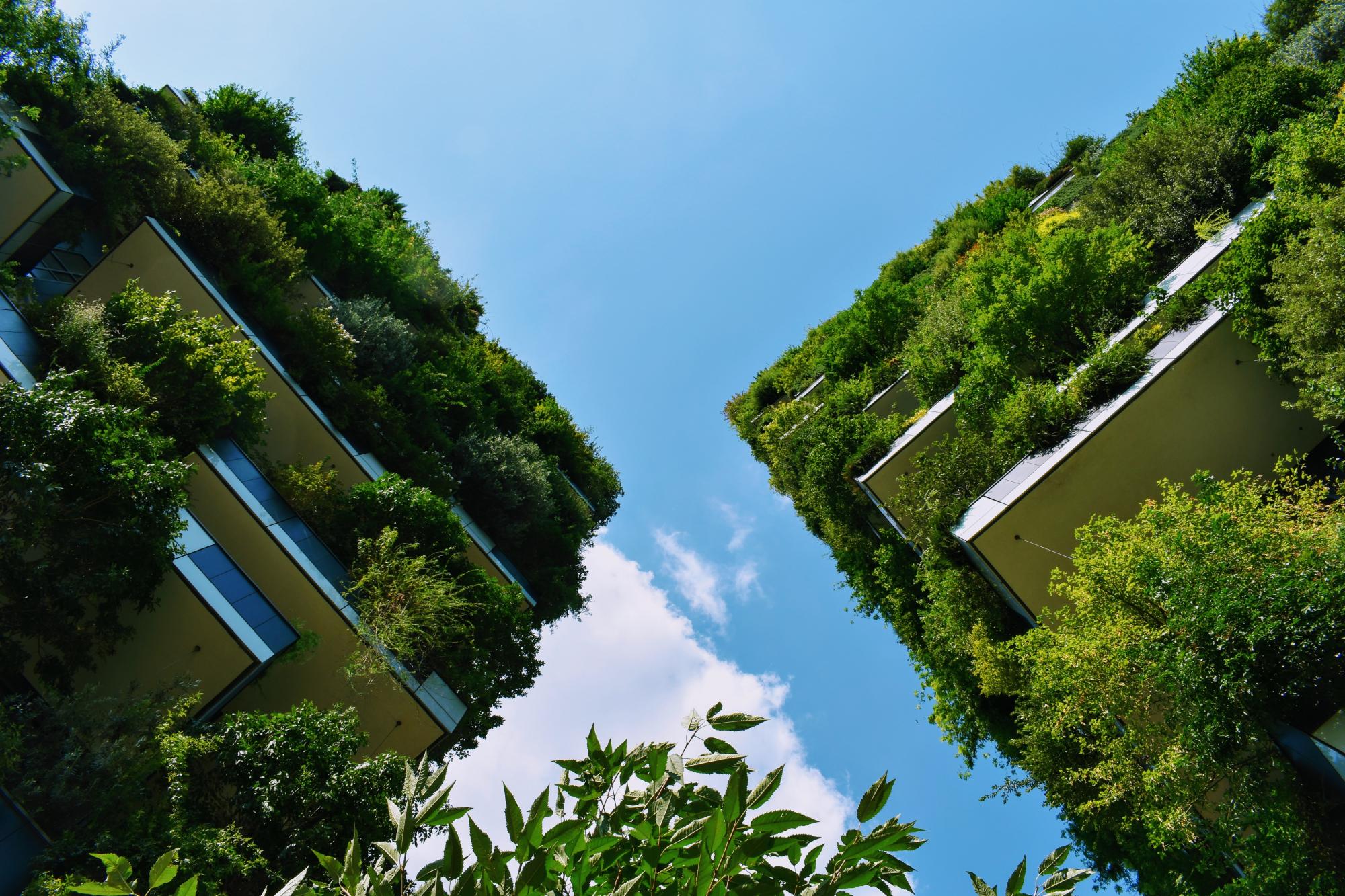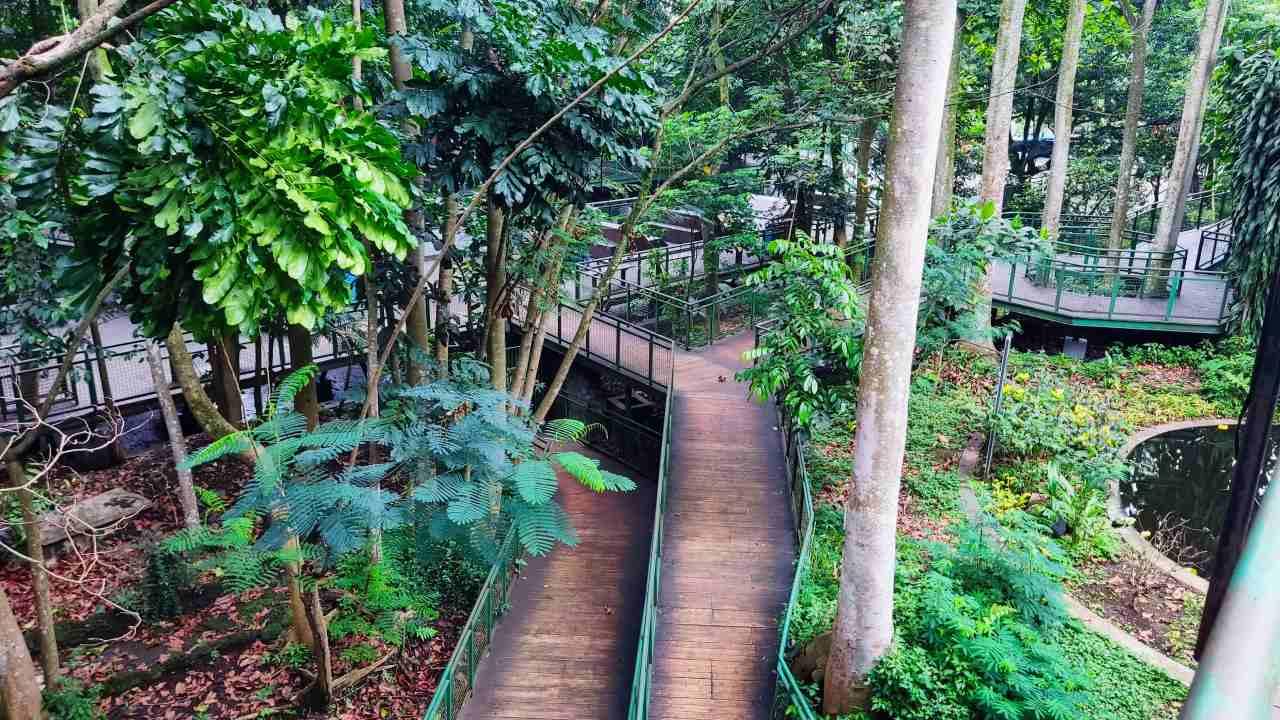Located in downtown Bandung, with an area of 3.8 hectares, Babakan Siliwangi (more commonly known as Baksil) has been declared The World City Forest on September 27, 2011, by the United Nations Environment Programme (UNEP). It is part of the green belt of Bandung and is a place of recreation for residents and features a canopied walking path. Declaring the forest as part of the urban green belt of the city has not been an easy task for the management team of Baksil as in 2011, there was a plan to build privately-owned multistories building at the site, which would greatly reduce the environmental quality of the area. In response to this challenge, the team initiated a series of awareness actions as well as a planting campaign to raise the profile of the forest, as well as to address several environmental challenges such as emissions reduction, noise pollution, soil degradation, and fauna and flora conservation. The intervention proved to be very successful as it established the Baksil forest as a new public space that enabled people to get to know and better appreciate their city forest. Several communities have been holding events in this area to activate the idle space, while inviting more people to interact with the forest, making it to be invaluable for the local community and the city of Bandung. (1,2,3,4,5)
Overview
Nature-based solution
- Parks and urban forests
- Large urban parks or forests
- Green corridors and green belts
Key challenges
- Climate action for adaptation, resilience and mitigation (SDG 13)
- Climate change mitigation
- Green space, habitats and biodiversity (SDG 15)
- Habitat and biodiversity conservation
- Green space creation and/or management
- Water management (SDG 6)
- Flood protection
- Social justice, cohesion and equity (SDG 10)
- Environmental education
Focus
Project objectives
Implementation activities
Climate-focused activities
Climate change mitigation:
- Increase green urban nature for carbon storage (wetlands, tree cover)
- Raise public awareness of behaviours, lifestyle and cultural changes with mitigation potential
Biodiversity conservation or restoration-focused activities
Biodiversity conservation:
- Protect and enhance urban habitats
- Preserve and strengthen existing habitats and ecosystems
- Protect species
- Undertake specific measures to protect species
- Means for conservation governance
- Raise public awareness
- Public engagement
- Capacity building
Main beneficiaries
- Local government/Municipality
- Non-government organisation/Civil Society
- Citizens or community groups
- Young people and children
Governance
Management set-up
- Co-governance with government and non-government actors
Type of initiating organisation
- National government
- Local government/municipality
- Multilateral organisation
Participatory approaches/ community involvement
- Dissemination of information and education
- Joint implementation (e.g. tree planting)
Details on the roles of the organisations involved in the project
Project implemented in response to ...
Financing
Total cost
Source(s) of funding
- Unknown
Type of funding
- Unknown
Non-financial contribution
- Provision of land
- Provision of labour
- Public authorities (e.g. land, utility services)
- Citizens (e.g. volunteering)
Impacts and Monitoring
Environmental impacts
- Climate change
- Enhanced carbon sequestration
- Green space and habitat
- Increased green space area
- Increased conservation or restoration of ecosystems
- Reduced biodiversity loss
- Increased number of species present
Economic impacts
- Reduce financial cost for urban management
Socio-cultural impacts
- Education
- Increased awareness of NBS and their benefits
Type of reported impacts
Presence of formal monitoring system
Presence of indicators used in reporting
Presence of monitoring/ evaluation reports
Availability of a web-based monitoring tool
References
2. Antara News (2011), Tunza Conference To Make Bandung World Urban Forest, available at Source link (accessed 02-04-2023)
3. O2Indonesia (2013), Story of a City Forest, available at Source link (accessed 02-04-2023)
4. 02Indonesia (2013), Why we should care about our city forest, available at Source link (accessed 02-04-2023)
5. Institut Teknologi Bandung (2012), KAJIAN PERKOTAAN: MEMPERTAHANKAN BABAKAN SILIWANGI SEBAGAI RUANG TERBUKA HIJAU KOTA BANDUNG, available at Source link (accessed 02-04-2023)
6. Netherlandsandyou (2020), A Forest Sensation in the Middle of the City, available at Source link (accessed 02-04-2023)
7. Meredian Alam & Pamela Nilan (2018): The campaign to save the Bandung city forest in Indonesia, Indonesia and the Malay World, DOI: 10.1080/13639811.2018.1496623 (accessed 02-04-2023)





